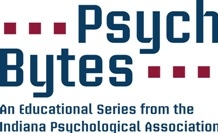Body-focused repetitive behaviors (BFRBs) are repetitive self-grooming behaviors in which pulling, picking, biting, or scraping of the hair, skin, or nails result in damage to the body. The most common BFRBs include excoriation (skin picking) disorder and trichotillomania (hair pulling disorder). About 5% of the general population suffers from either disorder.
Excoriation disorder is characterized by repetitive touching, rubbing, scratching, or picking at one’s own skin, often in an attempt to remove small irregularities or perceived imperfections. Discoloration, scarring, and even severe tissue damage can occur to the skin after picking. Trichotillomania is characterized by repetitive pulling of scalp hair, eyelashes, beard, nose hair, pubic hair, eyebrows, or other body hair. The compulsive hair pulling often results in bald spots. BFRBs can occur when a person experiences feelings such as anxiety, excitement, or boredom. Some report the act of repetitively picking or pulling is pleasurable. Many hours can be spent picking or pulling, which can negatively impact a person's social, work, and family relationships.
Comprehensive behavioral (ComB) model is a cognitive behavioral approach to managing BFRBs. In ComB, the therapist helps the patient learn to increase awareness of his/her repetitive behavior and respond differently to external and internal signals that trigger pulling/picking. For example, patients learn to alter physical settings (place) in which the pulling/picking tends to occur (e.g., bedroom, work desk) or remove tools that may be used for pulling/picking (e.g., tweezers, magnifying mirrors). Patients also learn alternative ways to address sensory signals (e.g., itching), thoughts (e.g., "these gray hairs look awful!"), and feelings (e.g., anxiety, boredom) that trigger urges to pick/pull. Recently published research shows that ComB is the most effective treatment for BFRBs.
To learn more about BFRBs and read the Experts Consensus Treatment Guidelines, visit the TLC Foundation for Body-Focused Repetitive Behaviors at
www.bfrb.org.
Contributor:
Heather M. Chik, Ph.D., HSPP
Anxiety & OCD Behavioral Health Center
Munster, IN
"PsychBytes” is a weekly educational resource from the Indiana Psychological Association (IPA) provided for psychologists, their colleagues and their patients.
